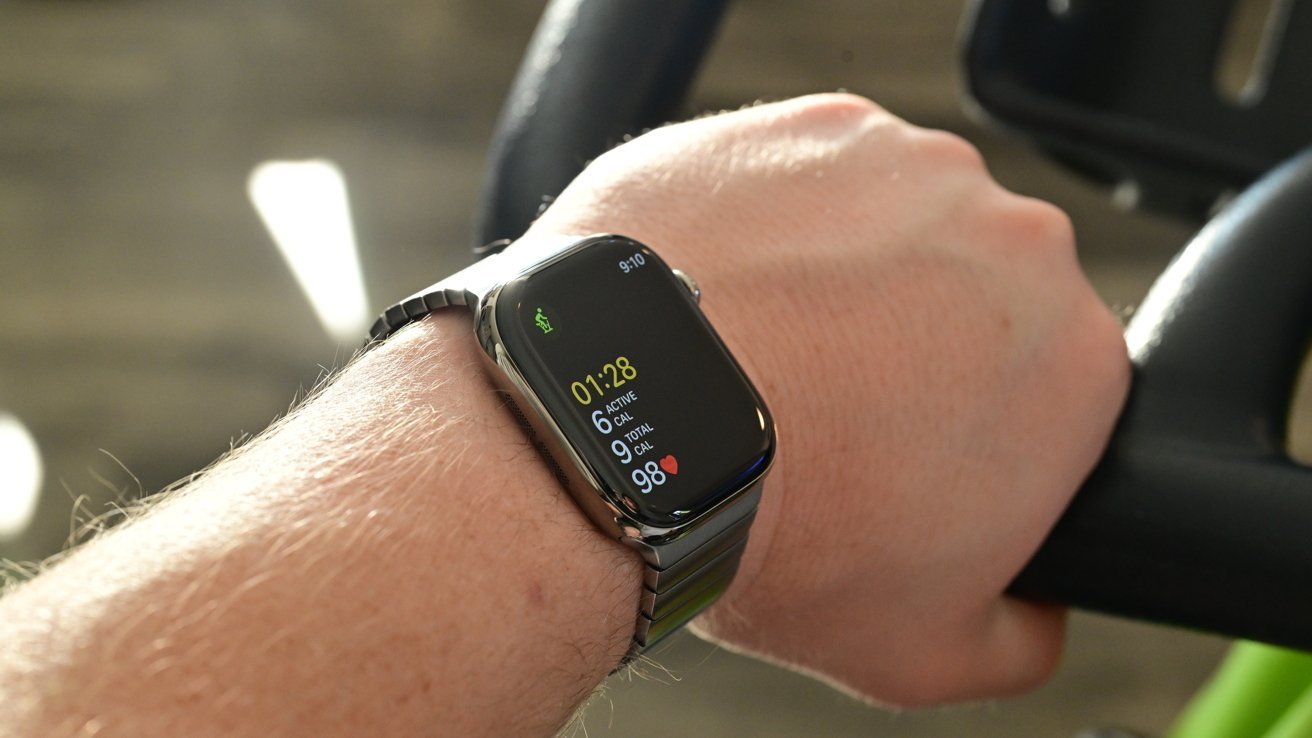Some Apple Watch users are wearing it on their ankle instead of their wrist to get better workout data, but we’ve done some testing, and it’s not a great place to wear the device.
The Apple Watch is extremely helpful as a fitness wearable, due to it collecting many different data points about your activity in one go. However, there is a trend where some users place the Apple Watch in a fairly unusual location.
Profiling the trend, the New York Times reports about people working out with the Apple Watch and other wearable devices attached to their ankle.
For some users, it was by necessity. Ana Espinal, one of the subjects of the piece, explained that she had very small wrists, believing that the Apple Watch was permanently too loose to register her heart rate.
Rather than using a strap type that could tighten the watch more closely to the wrist, she found a community of people who instead wore the Apple Watch on their ankles. This led to buying a Velcro strap, and the placement worked for her.
Espinal, who has more than 80,000 followers on TikTok, described the changed as “perfect,” with the Apple Watch featuring in many of her videos.
Accuracy and necessity
While small wrists can be an issue for physically wearing the band, others are taking up the practice for different reasons. For example, skin conditions and wrist tattoos can potentially interfere with the light passing through the skin, affecting the reading.
Then there are those who cannot wear anything on their wrist for professional reasons, which can include surgeons and people working in clean environments.
There is another category of ankle-based wearer, and that is users believing they can get better accuracy for their workouts from a change in placement.
In one example, medical assistant Shaniece Gale found that pushing her son in a stroller affected her activity, according to the Apple Watch. It would only record her steps when she has an arm free to swing, which can’t be done when pushing the stroller.
Pushing the stroller one-handed added more issues, as that arm would get tired quicker than if she pushed with both arms.
“So I was like, You know what? Let me put it on my ankle,'” said Gale.
Gale has continued to use the Apple Watch on her ankle when she uses stair or elliptical machines while working out, and occasionally catches others wearing it the same way. “It has definitely been a conversation, and I do recommend it to other people, especially moms,”Gale added.
The lack of detection has also been the case in a third example, with a worker using walking pads at a standing desk. After discovering that the steps were not being counted, they shifted it to their ankle.
This use case makes sense. However, this may be a problem for the sensors — and Apple doesn’t approve.
Not an official placement
While the concept of wearing an Apple Watch on an ankle makes sense, it’s not really an advisable thing for everyone to do all of the time.
Apple’s support materials state that the features of the Apple Watch are built to detect things like blood flow going through a wrist specifically. The biological makeup of a wrist and an ankle aren’t exactly the same, so you can expect the possibility of differences in the data.
We tried this on Monday morning. While admittedly the tester isn’t as petite by Espinal, with an Apple Watch Ultra on the wrist, and an Apple Watch Ultra 2 on the ankle, blood oxygenation readings varied by five percent, with it reading 98% on the wrist, and 93% on the ankle — with an unreliable connection on the ankle.
Heart rate varied as well. The wrist sensor read 75 beats per minute, and the ankle watch read 63 and warned twice about a low heart rate.
And as you’d expect, blood oxygenation didn’t work at all through a sock. Neither did heart rate. ECG doesn’t work on the ankle either.
Apple is clear that the algorithms in the Apple Watch are trained for specific motions from the wrist, rather than any other body part. We didn’t see any real difference in step counts when on the ankle or wrist, but certainly the example given about a desk treadmill or pushing a stroller, it makes sense to wear the device on the ankle.
Just don’t expect accurate heart rate or oxygenation readings.
Apple also recommends that Apple Watch wearers who don’t get a consistent heart rate reading due to having tattoos, working out in cold weather, or other complications could try using a Bluetooth chest strap instead.
There’s also the matter of it being a temporary placement, rather than an all-day one that is typical of using it on the wrist. The difficulty of reading the display of an Apple Watch attached to your ankle makes it pretty impractical, and highly illogical for use of features like Apple Pay.
There is one other societal side effect of ankle-based Apple Watch usage. According to the report, sometimes it’s mistaken for an ankle monitor, which could lead to others believing the user is under house arrest.
A possible partial fix
While the Apple Watch is Apple’s main wearable for fitness, there have been rumors that a future device could solve some of the problems the ankle-wearers deal with.
There have been occasional rumors of Apple working on adding more sensors to the AirPods. This includes temperature and heart rate measurements, which could give users an alternative to the Apple Watch for the same features.
It’s also feasible that, with the use of accelerometers, the rumored AirPods could handle some of the other motion-based fitness tracking data points, such as step counts.
However, it is unknown when Apple could release AirPods with that capability.





